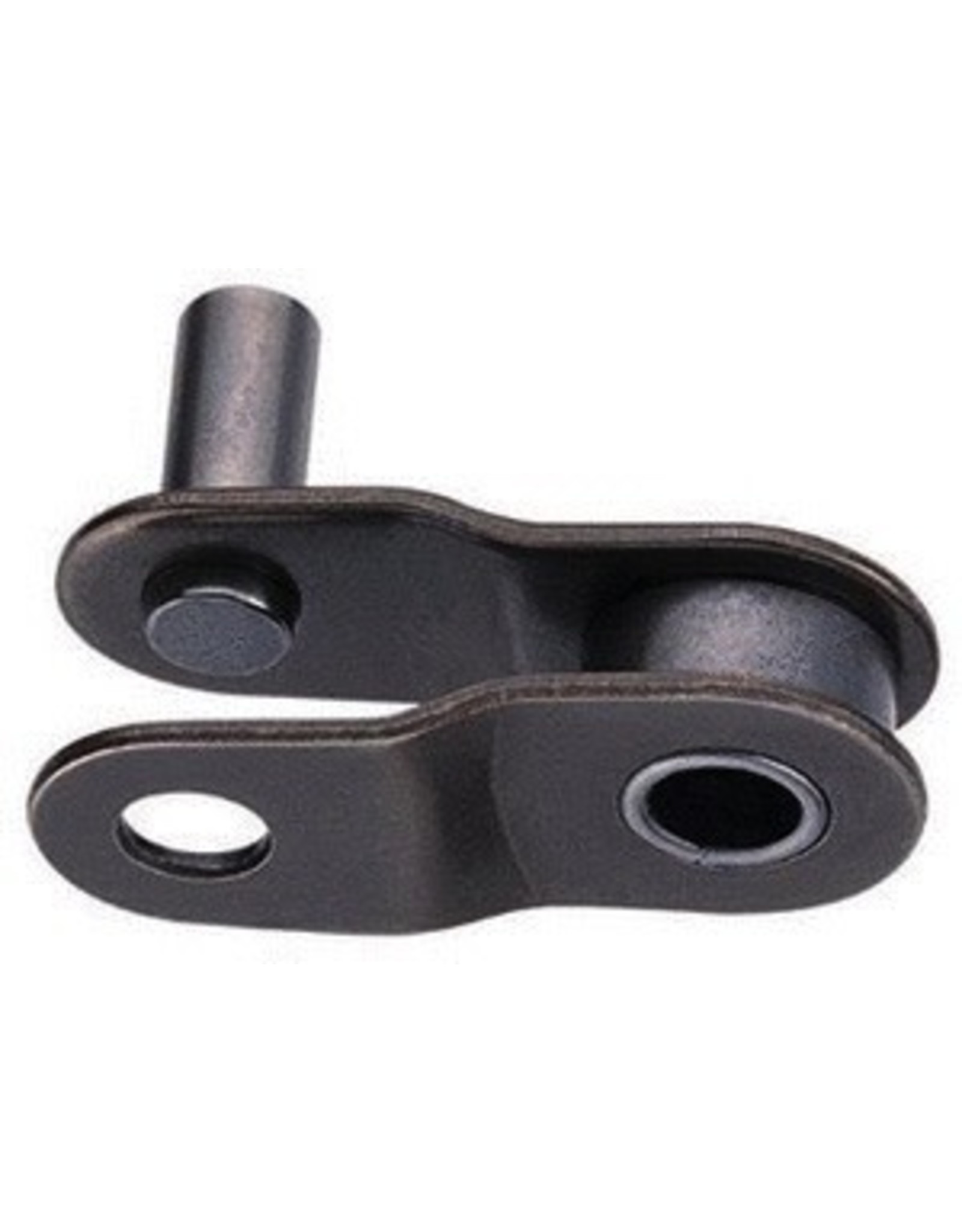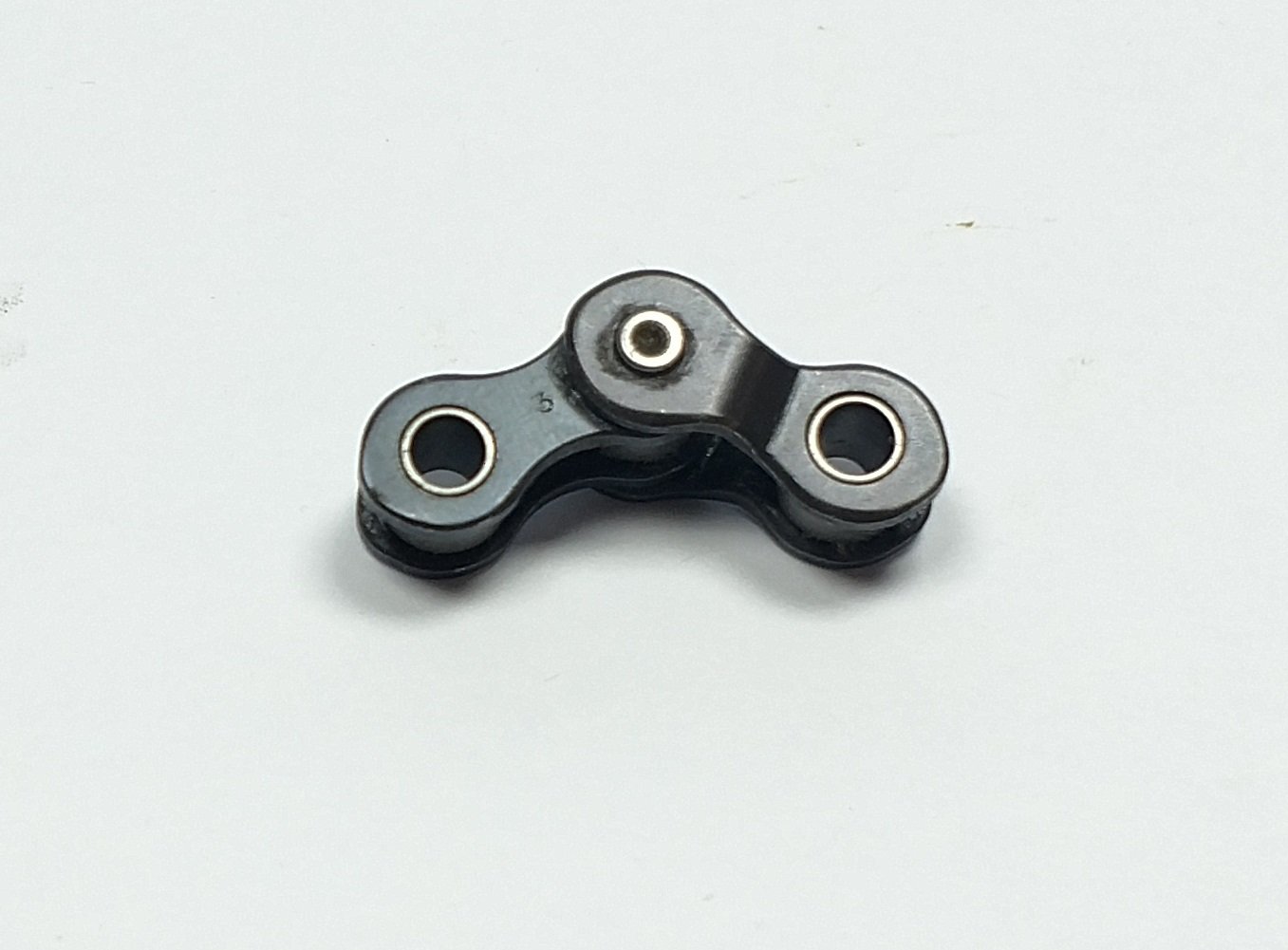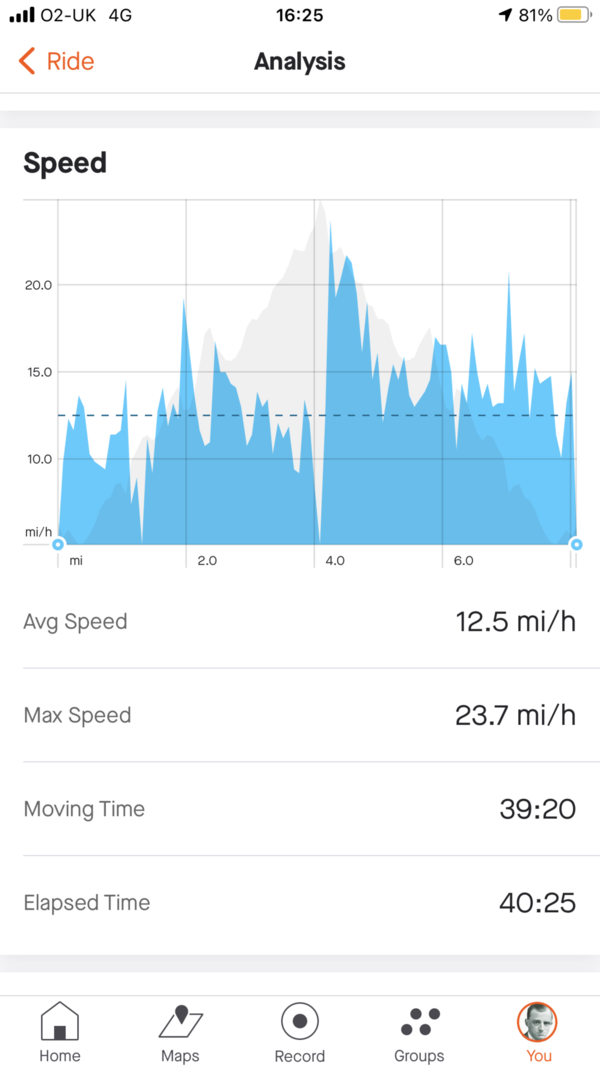Why the prime number idea? What advantages does that give?
Chains usually contain an even number of links, because they usually have an equal number of outer links and inner links. The only exception is when someone uses a half link, or they use a chain that is entirely composed of half links. Typically people only use half links when trying to create a 'magic gear' (a combination of chainring and sprocket that gives the correct chain length for bikes with vertical dropouts that have no horizontal movement for adjusting chain tension). Half link chains are also popular with BMX and trials riding.
A typical half link product
An alternative half link product
A chain composed entirely of half links
But there are problems when combining a chain with an even number of links, with a sprocket or chainring that also has an even number of teeth.
1. Each tooth will only ever encounter either an inner link or an outer link. But an inner link wears the sides of the teeth more than an outer link, because an outer link has a bigger gap between the side plates, and the narrow inner link each side of an outer link is guiding the outer link.
2. The wear locations that cause distance between the chain rollers to increase is different for inner and outer links:
For an inner link, the distance between two chain rollers increases when the bush and the roller wear
For an outer link, the distance between two chain rollers increases when the bush, the roller, and the pin wear.
So you can see that for outer links, there is an additional wear location.
Eventually you can expect two forms of uneven wear.
1. From the start, alternate teeth will encounter more side wear.
2. As the chain's pins, rollers, and bushes wear, you can expect alternate sprocket teeth and chainring teeth to become more worn and hooked.
There are several answers:
1. Use sprockets and chainrings with tooth counts that are prime numbers, and avoid using a number of chain links that is an exact multiple of the number of sprocket or chainring teeth.
2. If you have an even number of sprocket or chainring teeth, move the chain forwards or backwards one tooth after each ride.
3. Use a half link so that your chain has an uneven number of links, or use a chain composed entirely of half links (not a great solution in my opinion)
4. Replace the chain very regularly. This will help with length related wear issues such as alternate hooked teeth, but not with tooth side wear (unless you take care to put the new chain in the alternate position, displaced one tooth from the old chain position)
5. If you have an unfavourable combination, just ride the whole chain, sprocket and chainring combination to total destruction, then replace.
Why is the 48x16 a poor choice (I guess its something to do with it simply being 3x, but why is that a poor choice?)
Dividing the chainring teeth by the sprocket teeth gives a whole number, not a fraction. That means that the sprocket (and wheel) complete exactly 3 revolutions for each crank revolution. So far so good, but humans don't generate the same force and power all the way around a crank revolution. That means the same sprocket teeth will encounter the most powerful part of the pedal stroke over and over again. Quite a lot of single speed off roaders use something like 36 x 18, because most people use around 2:1 chainring:sprocket ratio for offroad single speed. This is a very bad combination, especially when combined with all the mud and grit found off road. For the same reason, you should regularly rotate the chainring by one bolt hole, so that the same teeth do not encounter the most powerful part of the pedal stroke.
On a fixed wheel bike, ignoring this guidance means that as well as the sprocket possibly wearing unevenly, the tyre may also wear unevenly, although this won't be a problem for single speed because the ability to freewheel means the tyre wear becomes evenly distributed.
Please note that to see any of the uneven wear I've described, you would have to ride thousands of miles without changing the chain position (or just be very unlucky when you remove the wheel and put it back). However, some people do ride long distances without much maintenance (e.g. commuters) and then wonder why a new chain behaves strangely and is extremely noisy. Similarly, if someone were to ride thousands of miles, remove the wheel to fix a puncture, then put it back one link/tooth out, they may wonder why it all suddenly became very noisy.




